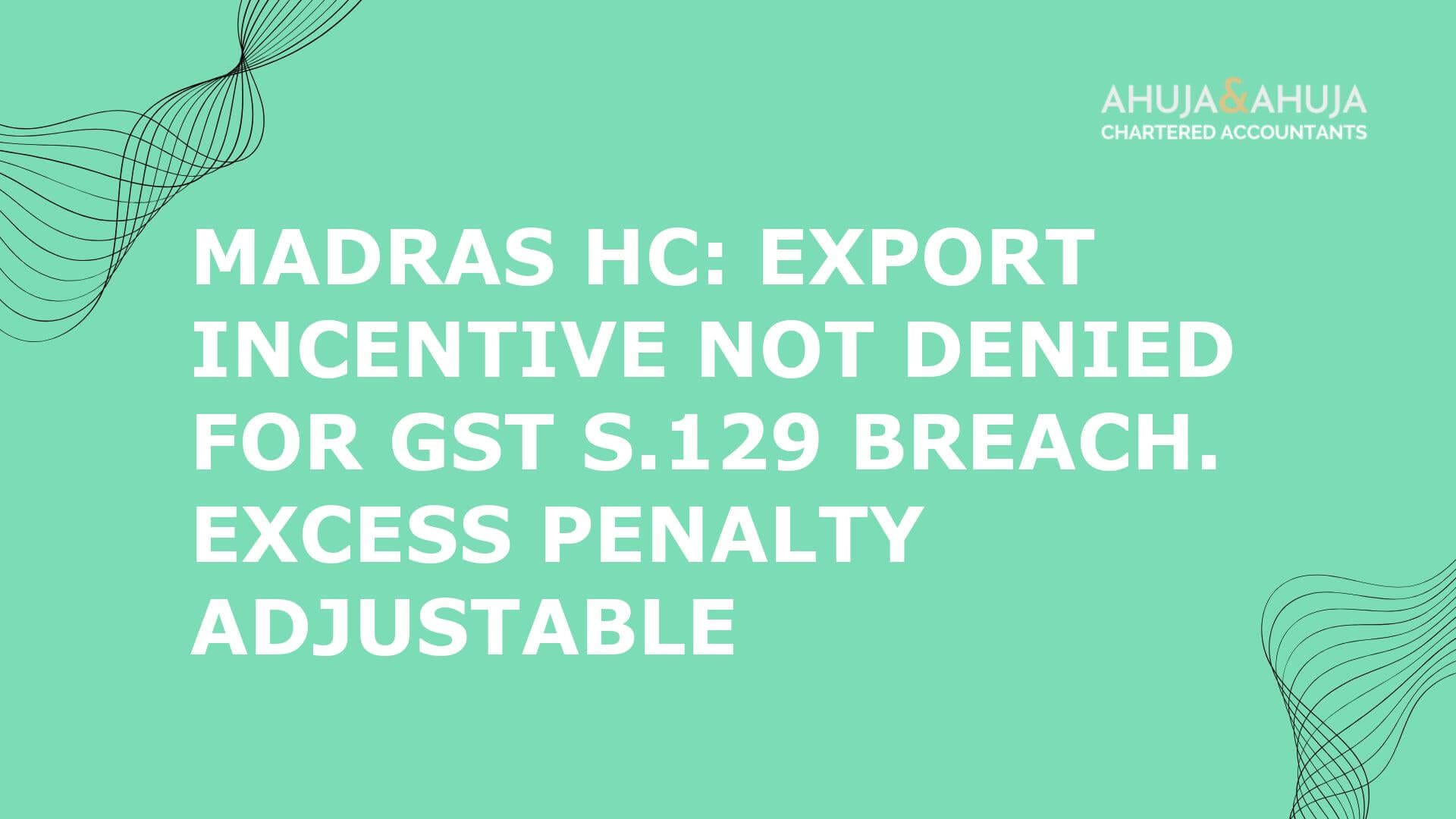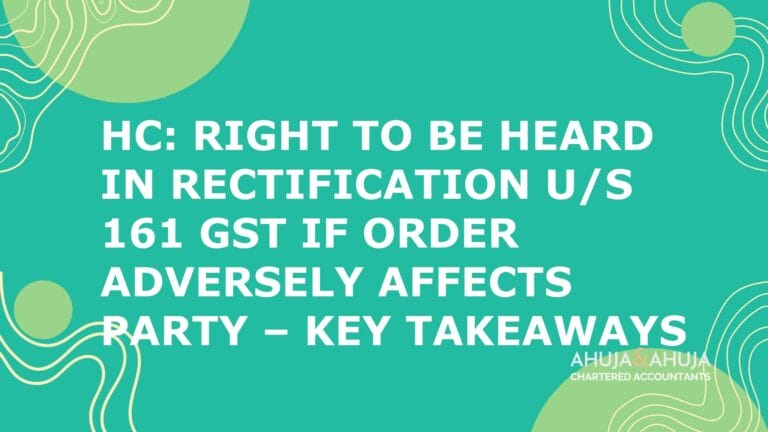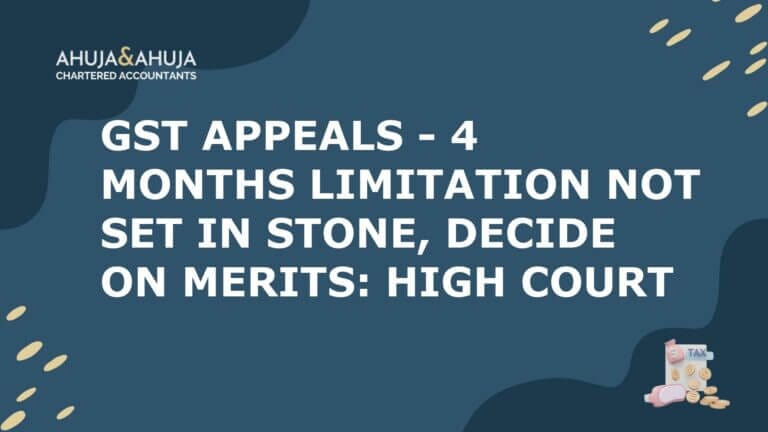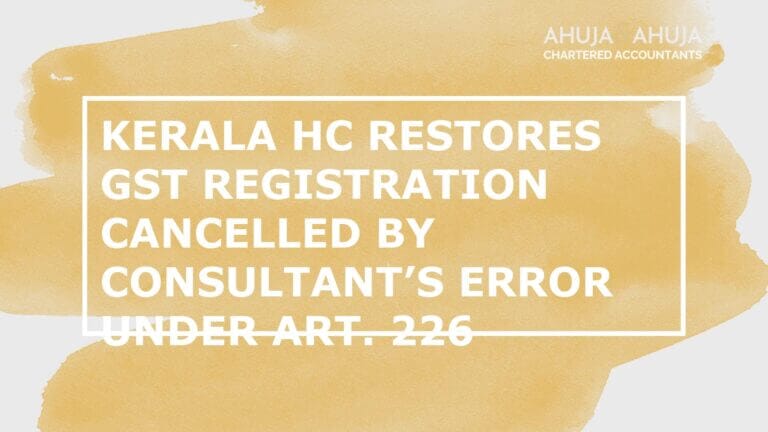Madras HC: Export Incentive Not Denied for GST S.129 Breach. Excess Penalty Adjustable
Navigating GST Compliance: Relief for Exporters Facing Technical Lapses
Exporters in India operate in a regulatory environment where even minor procedural missteps can trigger significant consequences. The recent Madras High Court ruling in the case of M/s. Athiyan Exports offers a much-needed breather, clarifying that export incentives cannot be denied solely due to a technical breach under Section 129 of the Central Goods and Services Tax (CGST) Act. The Court’s direction to adjust excess penalty against future tax liabilities further strengthens the practical relief available to genuine exporters.
This article unpacks the legal reasoning, precedent, and practical implications of this judgment, providing actionable insights for exporters, tax professionals, and GST officers.
Distinguishing Technical vs. Substantive Breaches under GST Section 129
Section 129 of the CGST Act empowers authorities to detain or seize goods and vehicles in transit if there is a contravention of GST provisions, most commonly for missing or incorrect E-Way Bills or E-Invoices. While the law aims to curb tax evasion, it often catches genuine exporters in its net due to procedural lapses.
The Athiyan Exports Case: A Snapshot
M/s. Athiyan Exports, a coir product exporter, faced a penalty after one of its export consignments was intercepted for lacking the mandatory E-Invoice and E-Way Bill. The company, eager to avoid export delays, paid a penalty of ?2,71,458 and later challenged the penalty and the denial of export incentives, arguing that the lapse was technical, not an attempt to evade tax.
Court’s Legal Reasoning: What Counts as a “Technical” Breach?
The Madras High Court drew a clear line between “technical/venial” breaches and substantive violations:
- Technical/Venial Breach:
- Minor, unintentional lapses in compliance (e.g., missing E-Way Bill due to oversight).
- No evidence of intent to evade tax or defraud the exchequer.
- The underlying transaction (here, export) is genuine and fully documented.
- Substantive Violation:
- Deliberate or repeated non-compliance.
- Clear intent to evade tax or manipulate records.
- Absence of bona fide documentation or suspicious transaction patterns.
The Court emphasized that penalties should be proportionate and not punitive where the breach is merely technical and the exporter’s bona fides are evident.
Key Precedents Cited
- Pulkit Metals Pvt. Ltd. (Madras HC, 2022):
Recognized the need for a measured approach in penalty imposition for technical lapses, allowing for lesser penalties where intent to evade is absent. - Hindustan Steel Ltd. vs. State of Orissa (SC, 1969):
The Supreme Court held that penalties should not be imposed for technical or venial breaches of law where there is no deliberate defiance or contumacious conduct.
These precedents reinforce the principle that substance must prevail over form, especially in the context of export transactions where procedural lapses are not uncommon.
Exporter Eligibility for Incentives Despite Procedural Lapses
The Madras High Court’s judgment brings much-needed clarity: export incentives cannot be denied merely because of a procedural lapse, provided the export is genuine and there is no mala fide intent.
- Substance Over Form:
The Court recognized that the primary objective of export incentives is to promote genuine exports, not to penalize exporters for every minor slip in compliance. - No Illusory Incentives:
If penalties for technical lapses are so high that they wipe out the benefit of export incentives, the very purpose of such schemes is defeated. - Guiding Principle:
As long as the exporter can demonstrate bona fide intent and the absence of tax evasion, procedural errors should not result in denial of incentives.
For exporters looking to maintain compliance and avoid such issues, professional support for GST registration services in India is recommended.
Setting a Precedent: Impact on Future Cases and Departmental Practice
This ruling sets a strong precedent for similar disputes:
- Precedential Value:
GST authorities and appellate bodies are now guided to distinguish between technical lapses and willful violations, ensuring that genuine exporters are not unduly penalized. - Departmental Approach:
The judgment encourages a shift from a mechanical, zero-tolerance approach to a more nuanced, risk-based compliance model. - Uniform Application:
Exporters across India, including major business hubs such as Delhi (Ahuja & Ahuja Delhi office), can now rely on this judgment to defend their entitlement to incentives in cases of bona fide procedural lapses, provided they maintain robust documentation and transparency.
Demonstrating Bona Fide Intent: Practical Steps for Exporters
To benefit from this legal interpretation, exporters must be proactive in documenting and demonstrating their bona fide intent:
- Maintain Complete Records:
- Export contracts, invoices, shipping documents, and payment trails.
- Correspondence with buyers and logistics providers.
- Supplementary Compliance:
- Rectify lapses promptly (e.g., generate missing E-Invoice/E-Way Bill).
- Voluntarily pay any applicable penalty and disclose the lapse to authorities.
- Legal Submissions:
- Prepare narrative statements explaining the circumstances of the lapse.
- Highlight absence of intent to evade tax in all representations.
- Anticipate Scrutiny:
- Be ready to present evidence and explanations if questioned by GST authorities.
Professional assistance for GST litigation services and compliance can be invaluable in such cases.
Adjustment or Refund of Excess Penalties: Practical Steps for Exporters
The Madras High Court’s direction to adjust the excess penalty paid under Section 129 against future tax liabilities is both pragmatic and legally sound. Here’s how exporters can operationalise this relief:
- Application to Proper Officer:
Initiate a formal request to the jurisdictional GST officer, referencing the court order and providing details of the penalty paid (e.g., DRC-03 challan, penalty order). - Supporting Documentation:
Attach all relevant documents—export invoices, shipping bills, payment proofs, penalty payment receipts, and the court’s judgment. - Timelines and Follow-up:
While the law does not prescribe a fixed timeline for such adjustments, exporters should maintain a record of all communications and follow up regularly with the department. - Handling Resistance:
If authorities delay or resist the adjustment, exporters may escalate the matter through written representations or, if necessary, seek judicial intervention citing the Madras HC precedent. - Strategic Value:
Adjustment of excess penalty into future tax credits preserves working capital and ensures that exporters are not unfairly penalised for technical lapses.
For more details on managing GST penalties and refunds, consult the GST refund services offered by professionals.
Mechanism for Adjusting Excess Penalty Against Future Tax Liabilities
The operationalisation of the court’s direction involves a few compliance checkpoints:
- Legal Framework:
Section 129 of the CGST Act governs penalties for transit violations, but the Act is silent on direct refunds or adjustments for excess penalties. The court’s order bridges this gap, allowing for practical relief. - Accounting and Record-Keeping:
Exporters must ensure that the adjustment is properly reflected in their GST returns and books of account. Maintain a clear audit trail linking the excess penalty paid to the subsequent set-off. - GST Return Disclosure:
When claiming the adjustment, exporters should disclose the details in the relevant section of their GSTR-3B or through correspondence with the GST officer, as per departmental instructions. - Avoiding Double Benefit:
Care must be taken to ensure that the same penalty amount is not claimed as both a refund and an adjustment, or set off against multiple liabilities.
Learn more about proper GST return filing under such circumstances in this GST return filing services guide.
Implications for GST Officers and Administrative Practice
This judgment signals a shift in how GST officers should approach penalty imposition and export incentive eligibility:
- Proportional Penalty Imposition:
Officers are expected to exercise discretion, imposing only reasonable penalties for technical lapses, especially where the exporter’s bona fides are clear. - Handling Export Consignments:
Instead of mechanically denying incentives or detaining goods, authorities should assess the genuineness of the export and the intent behind the lapse. - Internal SOPs and Training:
Departments may need to update their standard operating procedures and train officers to distinguish between technical and substantive violations, ensuring uniform application of the law.
Interplay with Statutory Appeal and Writ Jurisdiction
A notable aspect of the Madras HC ruling is its willingness to entertain a writ petition despite the availability of a statutory appeal under Section 107 of the GST Act:
- Rationale for Writ Jurisdiction:
The court recognised that relegating the petitioner to the appellate process would be futile and cause unnecessary delay, especially when the facts were undisputed and the breach was technical. - Strategic Consideration:
Exporters and tax professionals should assess whether to pursue a writ or an appeal based on the urgency, complexity, and nature of the dispute. The precedent supports direct writs in cases of clear, bona fide lapses. - Voluntary Penalty Payment:
The court clarified that voluntary payment of penalty does not estop an exporter from seeking relief if the penalty was imposed for a technical breach.
For more on appeal procedures, see the blog post on Procedure for Appeal against Cancellation of GST Registration.
Addressing Misconceptions & Compliance Recalibration
This judgment dispels several common misconceptions:
- Myth: Any procedural lapse automatically leads to denial of export incentives.
Reality: Only substantive, mala fide violations justify such denial. Technical lapses, if bona fide, do not. - Myth: Penalties for technical breaches must always be paid in full.
Reality: Courts can direct proportionate penalties and allow adjustment of excess amounts. - Compliance Strategy:
Exporters should move towards a risk-based compliance model—prioritising genuine documentation, prompt rectification of lapses, and transparent communication with authorities. - Stakeholder Education:
Compliance teams and advisors must update internal controls and SOPs to reflect this nuanced approach, ensuring that technical errors do not escalate into major disputes.
For help in compliance updating, see our GST consultancy services.
Limitations, Cautions, and Risks
While the Madras HC judgment is a positive development, exporters should be mindful of its boundaries:
- Isolated vs. Repeated Lapses:
The relief is intended for isolated, bona fide technical lapses—not for repeated or serious non-compliance. - Potential for Departmental Challenge:
Other High Courts or the GST Council may interpret the law differently, and the department may still challenge claims in certain cases. - Documentation Discipline:
Sustained compliance and meticulous record-keeping remain essential. Do not rely solely on this precedent as a shield for lax practices. - When Not to Rely:
If there is any hint of mala fide intent, or if lapses are frequent, this precedent may not offer protection.
Exporters operating in regions like Gurgaon (Ahuja & Ahuja Gurgaon office) should leverage expert advisory to avoid pitfalls.
Conclusion
The Madras High Court’s approach marks a significant step towards a more balanced and intent-driven GST compliance regime for exporters. By distinguishing technical lapses from substantive violations and allowing adjustment of excess penalties, the judgment protects genuine exporters from disproportionate hardship.
For the exporter community and tax professionals, the message is clear: maintain robust documentation, act promptly to rectify errors, and assert your rights where lapses are bona fide. For GST officers, the ruling is a call to exercise discretion and focus on substance over form.
A cooperative compliance environment—where intent, transparency, and proportionality guide enforcement—will ultimately serve the objectives of both the GST law and India’s export ambitions.
Disclaimer
The materials provided herein are solely for educational and informational purposes. No attorney/professional-client relationship is created when you access or use the site or the materials. The information presented on this site does not constitute legal or professional advice and should not be relied upon for such purposes or used as a substitute for professional or legal advice.







